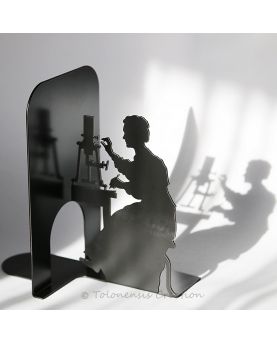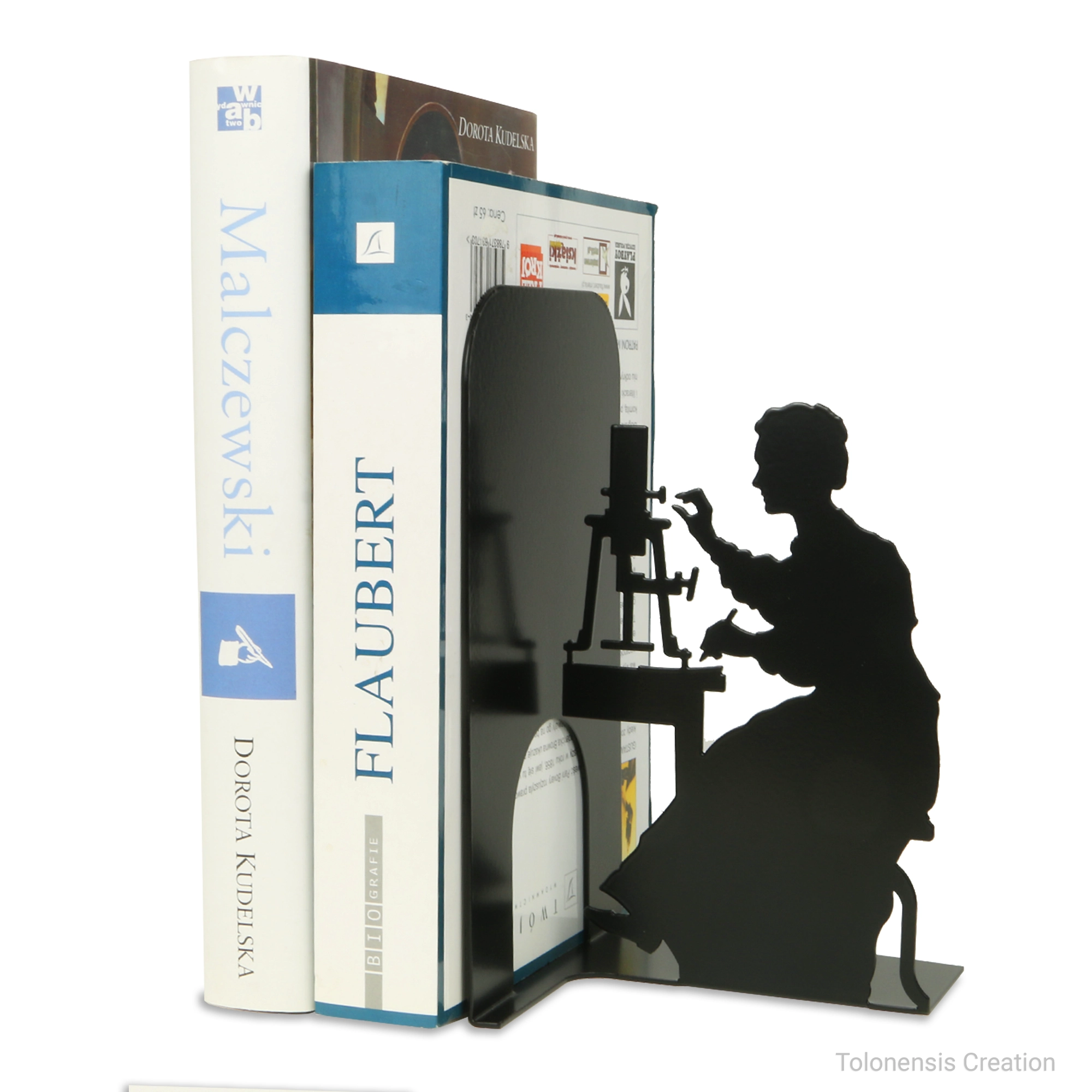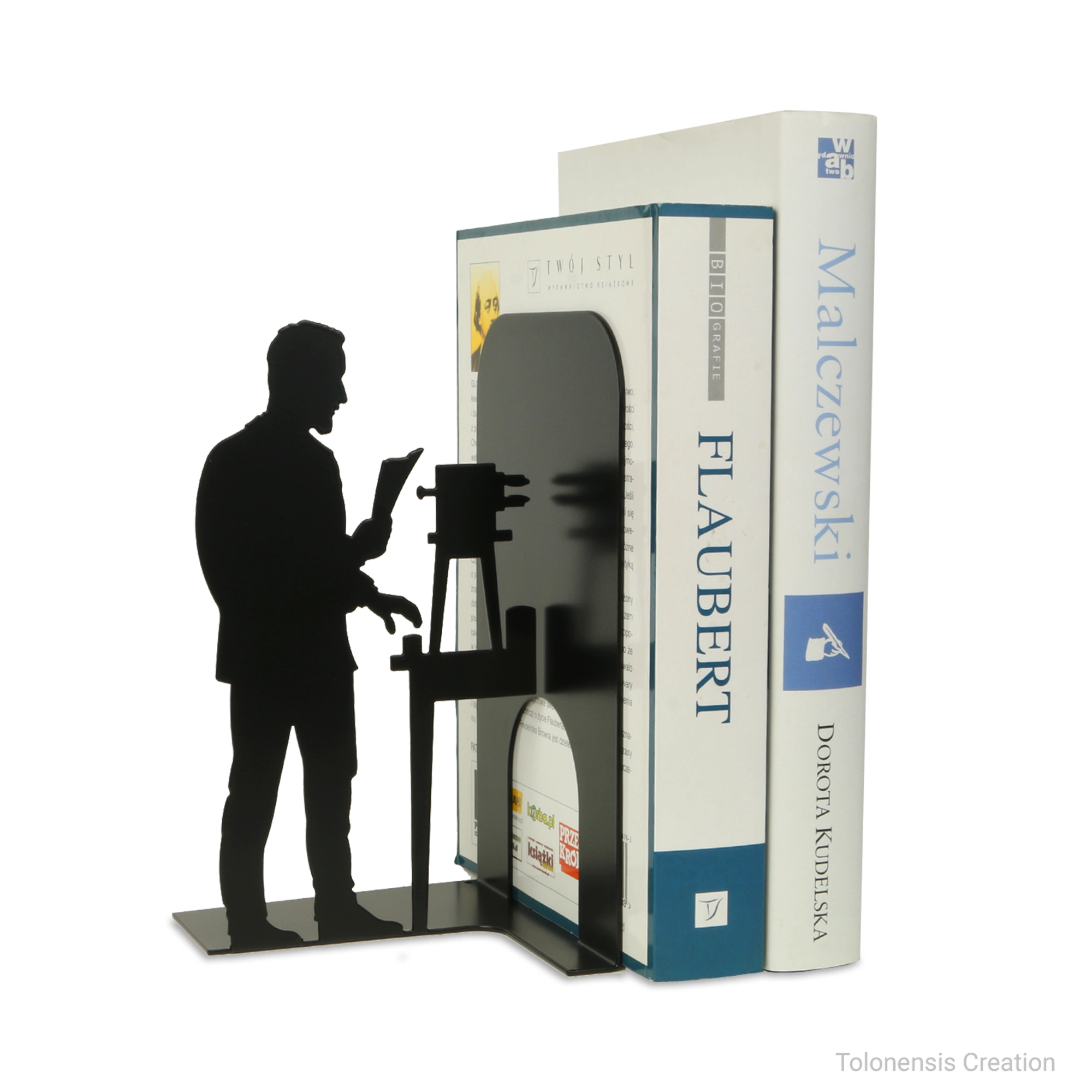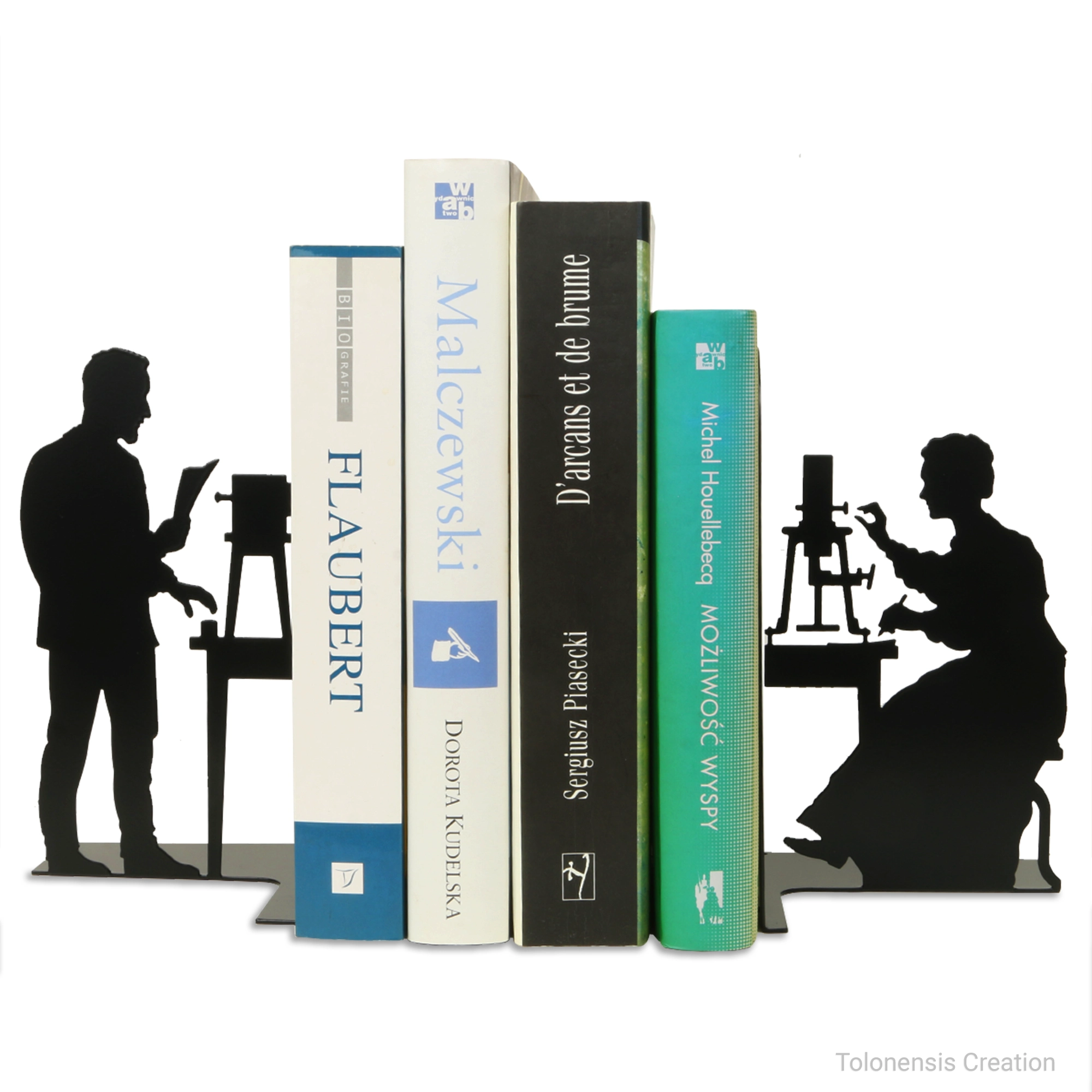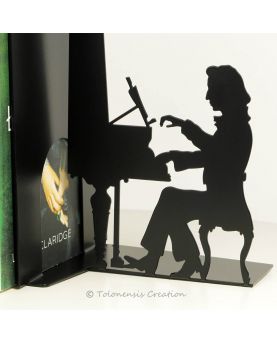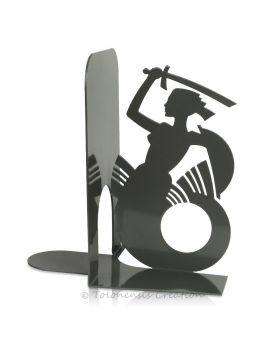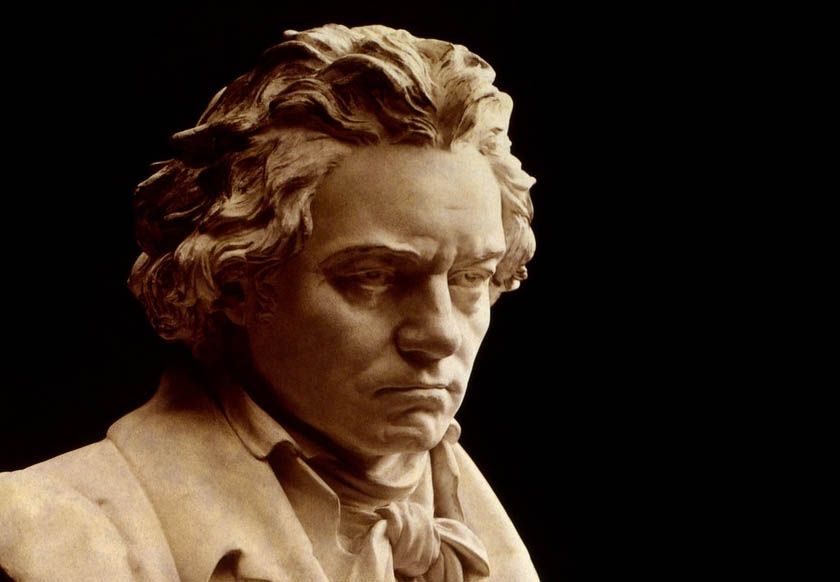The Pierre and Marie Curie metal bookends depict the iconic scientific duo working in their laboratory. Pierre stands beside his electroscope, while Marie operates the precision electrometer developed with Jacques Curie. A minimalist design that pays tribute to their discipline, innovation, and lasting impact on modern science.
Features
Crafted from high-quality steel, these bookends provide excellent rigidity, suitable for both standard and medium-format books.
Their stability is ensured through an auto-locking effect created by the weight of the books, reinforced by silicone non-slip pads under the base.
The matte black powder-coated finish integrates seamlessly into any interior décor and offers long-lasting resistance.
The steel used guarantees durability with no risk of deformation or wear.
Each piece benefits from the accuracy of industrial laser-cutting technology ideal for small-batch, premium home décor items.
Design, prototyping, and manufacturing are entirely carried out in-house. Sold as a set of two units.
Environmental Commitment
These bookends are produced using recycled or revalorized steel — a material that is 100% recyclable.
The solvent-free powder coating process uses electrostatic deposition followed by curing at approximately 280°C.
The packaging materials (paper and cardboard) are fully recyclable and sourced from natural fibers.
Official supplier of bookends for the Marie Curie Museum in Warsaw













